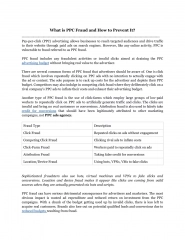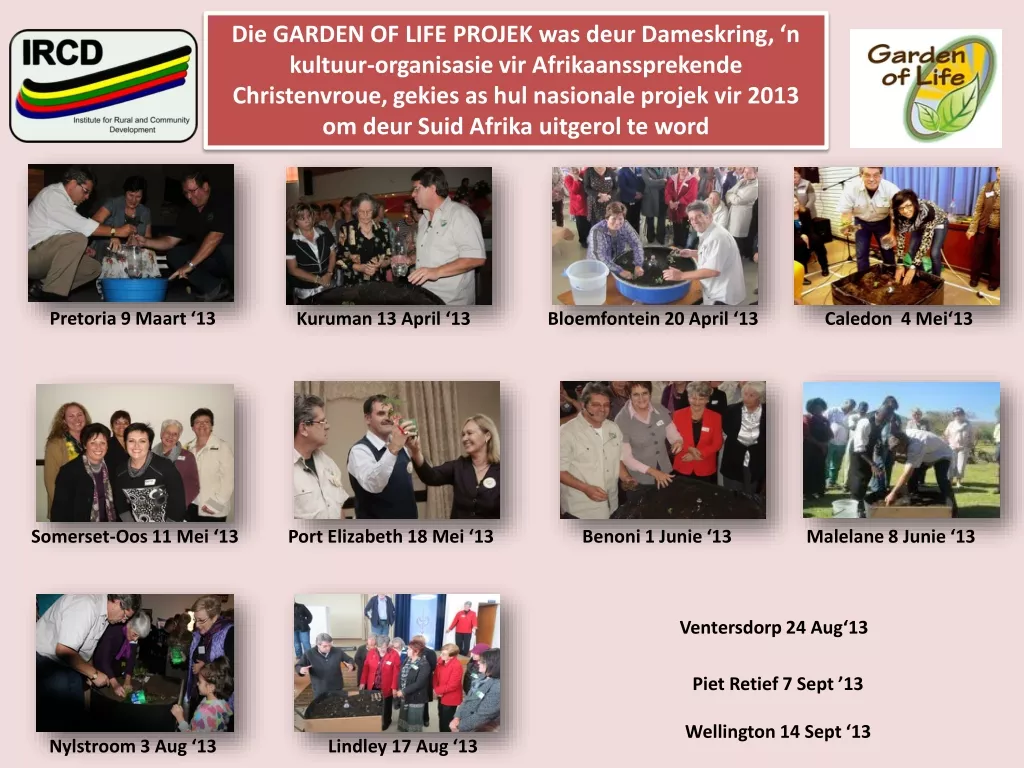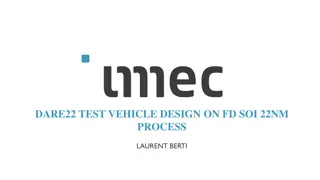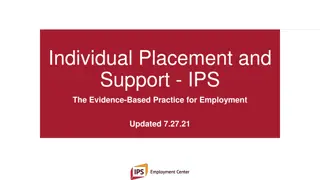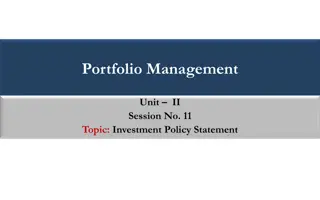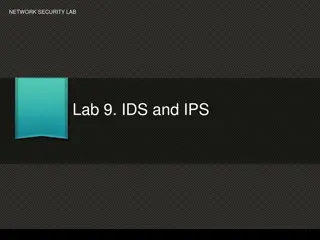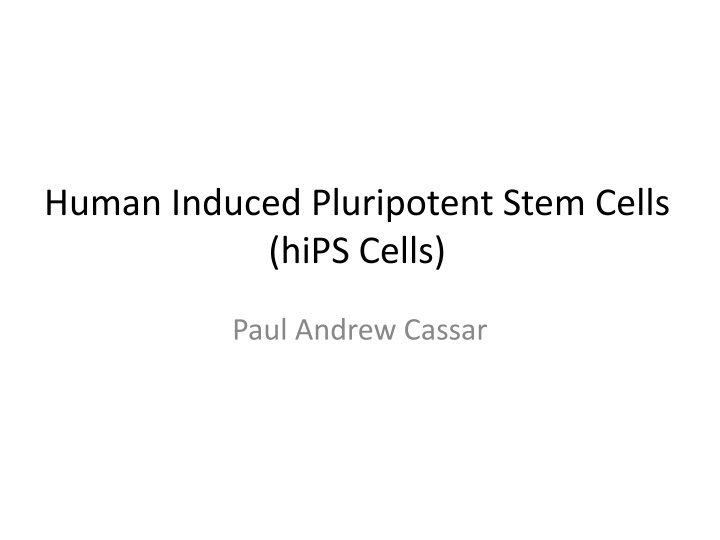
iPS Cells Reprogramming Process and Pluripotency Assessment
Explore the detailed process of reprogramming human fibroblasts into induced pluripotent stem cells (iPS cells) along with methods to assess their pluripotency, including teratoma assay and chimeras. Compare gene expression between iPS and ES cells using PCR and Western Blots. Discover the future goal of replacing reprogramming factors with small molecules.
Download Presentation

Please find below an Image/Link to download the presentation.
The content on the website is provided AS IS for your information and personal use only. It may not be sold, licensed, or shared on other websites without obtaining consent from the author. If you encounter any issues during the download, it is possible that the publisher has removed the file from their server.
You are allowed to download the files provided on this website for personal or commercial use, subject to the condition that they are used lawfully. All files are the property of their respective owners.
The content on the website is provided AS IS for your information and personal use only. It may not be sold, licensed, or shared on other websites without obtaining consent from the author.
E N D
Presentation Transcript
Human Induced Pluripotent Stem Cells (hiPS Cells) Paul Andrew Cassar
The many ways to make an iPS Cell Future goal is eliminate as many of the K,O,S,M factors as possible and replace them with small molecules
Summary of the Process Yamanaka Approach Human fibroblast isolation from patient s skin Retroviral/Lentiviral production of the reprogramming factors (Oct4, Sox2, Klf4 & c-Myc) production, collection & titration Viral transduction of human fibroblasts (overnight) Replace media with fresh fibroblast media. Fibroblast media is replaced every 2 days up to 1 week post-transduction Passage transduced fibroblasts onto mouse embryonic feeders (MEFs) and culture in human ES cell media for 3-4 weeks until hiPS cell colonies form.
Reprogramming human fibroblasts to pluripotent cells
Gene Expression comparing iPS to ES Cells using PCR and Western Blots PCR Western Blot
hiPSCs differentiate to multiple differentiated cell types in vivo
Teratoma Assay: Benchmark for Assessing Pluripotency in hiPSCs Endoderm Mesoderm Ectoderm Mesoderm Mesoderm Ectoderm hiPSCs are injected in mice subcutaneously. 9 weeks later tumors form (teratomas) that are comprised of multiple cell types that are derived from all 3 germ layers. The teratoma assay is the most rigorous method available for testing the pluripotency of human cells
Use of chimeras to test pluripotency of mouse iPS Cells Mouse Fibroblasts that express Green Fluorescent Protein (GFP) were reprogrammed into iPS cells and aggregated with a diploid embryo to generate chimeras. Generation of chimeras is a more rigorous test for pluripotency however, for ethical reasons cannot be done with human iPS cells.
What to do with Human iPS Cells? Direct differentiation into specific cell types for: autogenic cell based therapies patient-derived cell lines for research on specific diseases creation of primary cell lines for drug discovery. i.e. liver cells to test drug toxicity in vitro
Advantages & Disadvantages Advantages Disadvantages Generation of iPS cells does not require embryonic tissue Safety concerns due to use of virus to reprogram the cells Can generate an autogenic (patient- specific) pluripotent stem cells Safety concerns due to the use of transgenes to reprogram cells Reduces the potential for rejection when implanted into patients High costs associated with generation and characterization of each iPS cell line Creation of disease-specific lines allows for generation of primary cell lines for drug discovery & basic research


